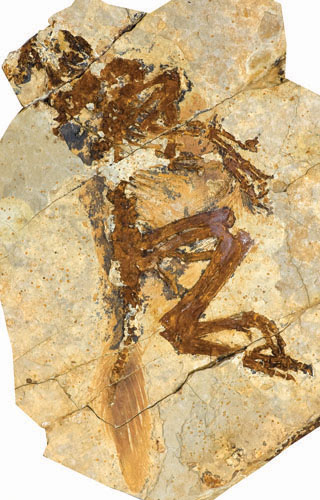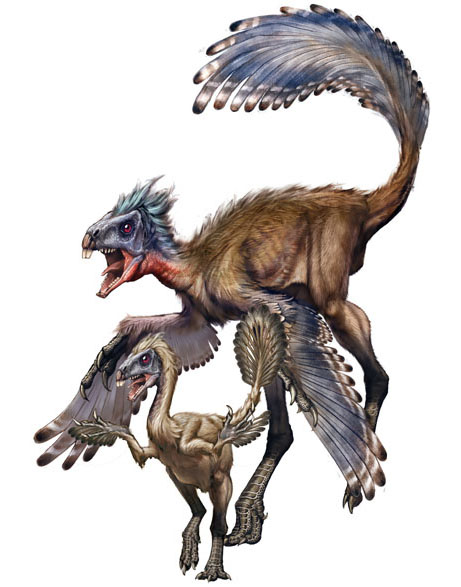| Location: Home > Research > Research Progress |
| Exceptional dinosaur fossils show ontogenetic development of early feathers |
|
Dr. Xing Xu, Institute of Vertebrate Paleontology & Paleoanthropology, Chinese Academy of Sciences, and his collaborators, describe an early-juvenile specimen and a late-juvenile specimen, both referable to the oviraptorosaur Similicaudipteryx, recovered from the Lower Cretaceous Yixian Formation of western Liaoning, China. The original papers was published online in Nature, April 29, 2010. Feathers or primitive feathers have been documented in most non-avian coelurosaurian theropod groups on the basis of numerous specimens recovered from the Lower Cretaceous Jehol Group and the Jurassic Daohugou and Tiaojishan formations, but exceptionally preserved specimens remain rare. Even rarer are juvenile specimens preserving integumentary tissue that can provide insights into the development of early feathers. Xu and his collaborators found that the two specimens have strikingly different remiges and rectrices, suggesting that a radical morphological change occurred during feather development, as is the case for modern feathers. However, both the remiges and the rectrices are proximally ribbon-like in the younger specimen but fully pennaceous in the older specimen, a pattern not known in any modern bird. In combination with the wide distribution of proximally ribbon-like pennaceous feathers and elongate broad filamentous feathers among extinct theropods, this discovery suggests that early feathers were developmentally more diverse than modern ones and that some developmental features, and the resultant morphotypes, have been lost in feather evolution. “Although our observations are largely consistent with the concept of a barbs-to-rachis-to-vane evolutionary sequence that has been supported by data from both palaeontology and developmental biology, the real pattern seems to have been more complex in both evolutionary and developmental terms”, said Xu. This research was supported by grants from the Chinese Academy of Sciences, the National Natural Science Foundation of China and Special Funds For Major State Basic Research Projectsof China, presented to Dr. Xing Xu.
Figure 1 Similicaudipteryx juvenile specimen
Figure 2 The reconstruction of Similicaudipteryx. |

